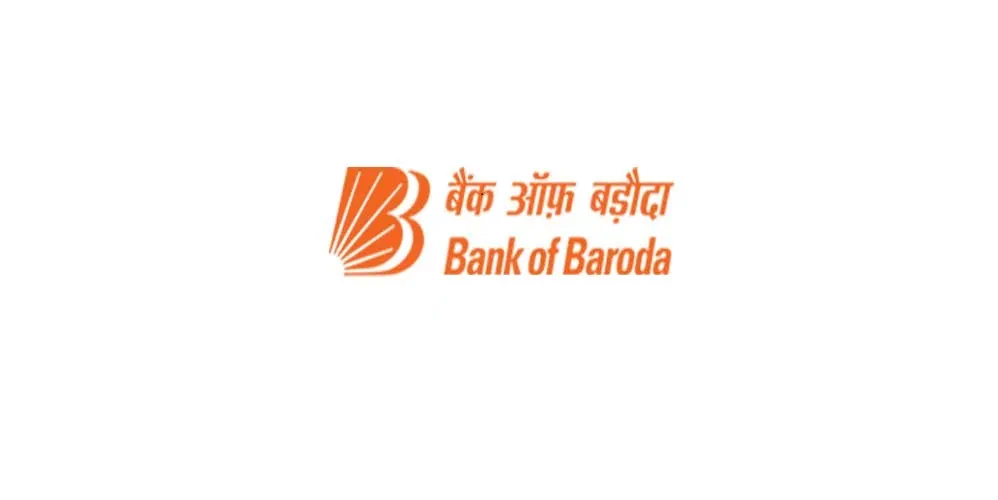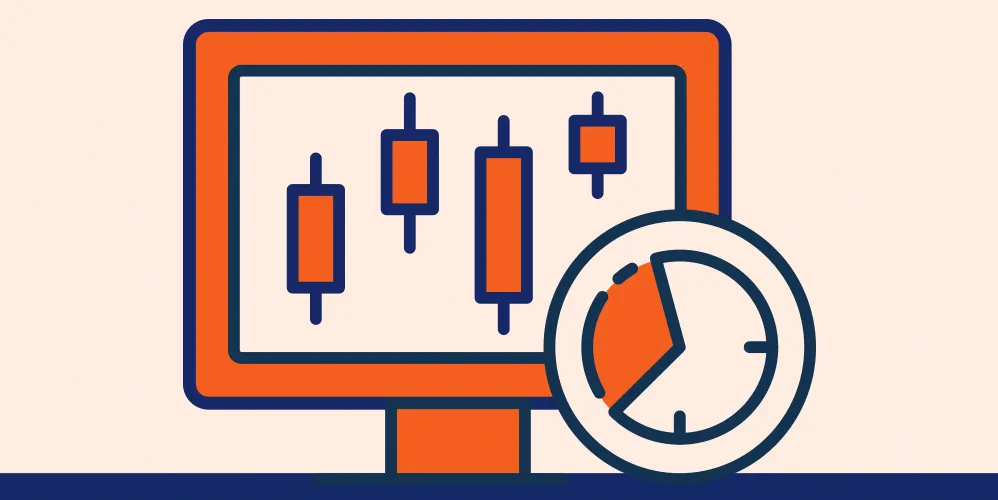
Get latest financial information, tips, insights & more

IPO: Understanding Initial Public Offerings and How They Work |
When companies grow and need to raise capital, they often turn to the public markets. One of the most common methods for doing so is through an Initial Public Offering, commonly known as an IPO. Understanding what an IPO is, how it works, and its potential benefits and risks is crucial for anyone considering investing in the stock market.

Insurance in India: Types, Importance & Benefits
In a world where uncertainties are an inherent part of life, insurance plays a pivotal role in providing financial security and peace of mind. Understanding the fundamentals and definition of insurance and the various types available in India is essential for making informed decisions about safeguarding your future. This comprehensive guide will delve into the meaning of insurance, its importance, and the diverse types of insurance policies available in the Indian market.

What is Dividend Yield in Share Market? Definition and Calculation
Dividend yield is a crucial financial metric that investors use to evaluate the income generated from their investments in dividend-paying stocks. Understanding what is dividend yield can help investors make informed decisions about their portfolios, focusing not only on potential capital gains but also on the regular income generated from dividends. This comprehensive guide will explain the definition, calculation, importance, and impact of dividend yield on investment decisions, and explore the factors that affect it.

Understanding CAGR: Formula, Calculation, and Importance
When it comes to investing, knowing how to evaluate the performance of your assets is crucial. One of the most effective tools for this purpose is the Compound Annual Growth Rate (CAGR). This metric provides a clear picture of an investment's growth over time, making it easier for investors to gauge the potential return on their investments. In this blog, we’ll explore the definition of CAGR, how to calculate it, its importance, and its various uses.

Investing in Large Cap Mutual Funds: What You Need to Know
Investing in mutual funds offers a diversified and professionally managed approach to growing your wealth. Among the various types of mutual funds available, large cap mutual funds stand out as a popular choice, particularly for investors seeking stability and consistent returns. But what exactly are large cap mutual funds, and why should they be part of your investment strategy? Let’s delve into these questions and explore the benefits, workings, and suitability of large cap mutual funds.

Systematic Withdrawal Plan (SWP) in Mutual Funds: A Guide to Regular Income
A Systematic Withdrawal Plan (SWP) is a financial facility that allows investors to withdraw a fixed amount of money from their mutual fund investment at regular intervals. This feature is particularly beneficial for those seeking a steady income stream, such as retirees or individuals requiring regular cash flow. SWP provides the flexibility to customize withdrawal amounts and frequencies, making it an attractive option for many investors.

The Importance of Pension Funds: Secure Your Future with Steady Retirement Income
At a younger age, retirement planning may not be high on your priority list, as you might be of the mindset there is still a lot of time left. However, as age catches up with you, you might be in a hurry to save enough money for a comfortable life post retirement. As the golden years approach, the importance of a secure and comfortable retirement becomes increasingly evident. This is where pension funds come in handy. Now, you might be wondering, what is a pension fund? In this journey towards financial fulfillment, pension plans act as invaluable tools that provide a steady income stream during retirement. In this blog, we'll delve into the world of pension plans and their benefits.

Navigating New Fund Offers (NFOs): Opportunities, Risks, and Considerations
Individual investors have started to invest more in mutual funds in order to diversify their portfolios. By investing in mutual funds, they also seek professional management of their investments. New Fund Offer (NFO) is one of the key events in the life cycle of mutual funds. If you are looking forward to exploring new investment opportunities and diversifying your portfolio then NFOs are designed for you.

Demystifying RTGS: A Comprehensive Guide to Real-Time Gross Settlement
With the advent of technology, banking has gathered momentum closing gaps between time and space. These days fund transfer is no more a matter of grave concern let alone the trepidation of physical presence, security, and much more. With efficient technology, financial security has evolved through Real Time Gross Settlement (RTGS). Banks today have many modes of transferring funds, such as Immediate Payment Service (IMPS), National Electronic Funds Transfer (NEFT), and Real-Time Gross Settlement (RTGS). While the first two are the fastest and most secure modes of transacting small funds, RTGS is a swift and secure way of transferring large funds to another bank.

Understanding Gratuity: Your Complete Guide to Employee Benefits
In the complex landscape of employment benefits and compensations, the term "gratuity" frequently arises. Gratuity is a financial benefit offered to employees as a gesture of gratitude for their unwavering commitment and service. This comprehensive guide will thoroughly examine the concept of gratuity, delving into its definition, eligibility requirements, calculation methodology, and the significance of comprehending this essential employment benefit.

Investing in Debt Funds: A Comprehensive Guide for Steady Returns
Financial planning is one of the most crucial aspects of investment and at the same time, an individual needs to understand the various options that are available out there in the market which may further help an individual to make informed decisions. Among the various investment options that are available, debt funds is one of the most popular choices for those who are looking forward to steady returns with lower risk as compared to equity investments. This blog revolves around explaining debt funds, their functioning, features, associated risks and considerations for potential investors.

Understanding Bounced Cheques: Definition, Consequences, and Fees
In simpler terms, a dishonoured cheque also called as bounced cheque is the one that gets rejected by the bank due various financial and non-financial reasons such as lack of funds in the account, incorrect date, signature mismatch etc. In simpler terms, a dishonoured cheque also called as bounced cheque is the one that gets rejected by the bank due various financial and non-financial reasons such as lack of funds in the account, incorrect date, signature mismatch etc. This usually happens for a variety of reasons. When a cheque bounces, the bank may charge fees to the person who wrote the cheque (the issuer). Bouncing cheques repeatedly can hurt your credit score and make it harder to do business in the future. There can even be legal trouble / implications, if the cheque was dishonoured or returned unpaid for want of funds / insufficient funds.

Understanding MICR: Full Form, Meaning, and Its Role in Banking
While using cheque books, you must have noticed those magnetic code bars at the bottom of every cheque leaf. Those bars are unique ink codes that act as a special language that can only be understood and decoded by bankers. This is known as the MICR code. MICR stands for Magnetic Ink Character Recognition. It is a technology that involves the use of magnetic ink and special characters to process and verify the legitimacy of cheques. Introduced by the Reserve Bank of India, MICR technology has revolutionized the way banks process cheques and other financial documents. Read further to know more about MICR meaning in banking.

Importance of Insurance in Protecting Your Financial Future
In this vast and unpredictable world, we are all trying to navigate the twists and turns that life presents us with. It may sound like a doomsayer, but it's essential to acknowledge the realities that can disrupt our carefully constructed plans. And that's precisely where the concept of insurance steps in to lend a helping hand.

Different Types of Life Insurance - Which One is Right for You?
Getting a life insurance policy is one of the most responsible decisions you could ever take, as it ensures that your near and dear ones are not left behind without financial support in case of an unforeseen event. It stands as a crucial financial safeguard, offering protection and security for loved ones in the event of an unexpected tragedy. However, navigating the world of life insurance can be overwhelming due to the multitude of options available. Understanding the various types of life insurance can help individuals make informed decisions that align with their needs and financial goals, while safeguarding their loved ones.

Difference between Term Insurance and Whole Life Insurance
In a world of endless options, where information flows ceaselessly, and choices multiply like rabbits, navigating the labyrinth of insurance can feel like a daunting task. And when it comes to the age-old debate between term insurance and whole life insurance, the confusion only deepens. The financial world seems to have a language of its own, a language that often leaves the average person feeling like an outsider.

Demat Account for Mutual Funds: Your Comprehensive Guide
In today's dynamic financial landscape, managing your investments efficiently is crucial to building a secure financial future. One avenue that has gained immense popularity in recent years is the demat account for mutual funds. This innovation has revolutionized the way investors handle their mutual fund investments, offering convenience, security, and a streamlined approach to portfolio management.

Avoid Common Mistakes to File a Successful Insurance Claim
Insurance claims can be complex and overwhelming, especially when you're already dealing with the stress of an unfortunate event. Whether it's a car accident, property damage, or a medical emergency, filing an insurance claim is essential to receive the financial support you need. However, the process isn't always straightforward, and making mistakes can lead to delays, denials, or receiving a lower settlement than you deserve.

The Ultimate Guide to Vehicle Insurance: Types, Benefits, and How Does It Work
In the ever-evolving landscape of the automotive world, one constant remains – the need for reliable vehicle insurance. Whether you're driving a sleek sedan, a rugged SUV, or a zippy little hatchback, having the right insurance coverage is not just a legal requirement but also a crucial financial safeguard. In this comprehensive guide, we'll navigate the twists and turns of vehicle insurance, shedding light on its importance, the types of coverage available, and the various benefits that come with it.

Should You Include Your Parents in Group Health Insurance?
Health insurance plays a crucial role in ensuring financial protection against unexpected medical expenses. It not only provides coverage for the policyholder but also extends its benefits to family members, including parents. However, when it comes to including your parents in group health insurance, there are several factors to consider. In this blog post, we will explore the pros and cons of including your parents in group health insurance, discuss alternative options, and provide key considerations before making a decision.

Understanding Salary Accounts: Features, Benefits, and Opening Procedures
If you are wondering “what is a salary account?”, let us answer that for you. As the name itself suggests, a salary account refers to an account in which an employee’s salary gets credited. Salary accounts are a convenient way for companies to pay the salaries of their employees. These accounts come with a plethora of features and offer perks to the employees as well as the employers.

Mastering Monthly Average Balance: A Guide to Financial Security
In the ever-evolving world of personal finance, we often come across terms and concepts that can feel as elusive as trying to catch a fleeting breeze. "Monthly Average Balance" is one such term. Many individuals often perceive the minimum balance requirement as a tactic banks employ to restrict access to their funds or increase their earnings. However, this common belief doesn't necessarily hold true.

What is Goods and Services Tax (GST) in India - Meaning, Types & Benefits
Goods and service tax (GST) is a value-added tax (VAT) collectively levied on goods and services by the Central and State Governments. Following a dual structure comprising Central GST (CGST) and State GST (SGST), GST plays a significant role in revenue distribution formulated by the GST council. What is the GST Council? The GST Council is a joint forum of the Centre and the States, the Union Finance Minister, The Union Minister of State in charge of Revenue of finance, The Minister in charge of finance or taxation or any other Minister nominated by each State Government, making recommendations to the Union and the States on important issues related to GST.

Net Asset Value (NAV) in Mutual Funds: Calculation, Significance, and Importance Explained
Mutual funds have become a popular investment choice for investors as they offer professional management as well as diversification benefits. Mutual funds alone are capable of providing you with thousands of different options to invest in. But before investing, it is essential to understand certain terminologies associated with mutual funds.

Why Consider Gold as an Investment?
Gold has always held a significant place in Indian culture and traditions for centuries. But today, gold has also emerged as a popular investment avenue in India. The country has a long-standing affinity for this precious metal and it plays a crucial role in the country's economic landscape.

What is Travel Insurance? Exploring Coverage, Types, and Importance
Traveling is an exhilarating experience that unveils new cultures, breathtaking landscapes, and thrilling adventures. From exploring ancient ruins and monuments to basking on pristine beaches, the excitement of travel is undeniable. However, amidst the excitement, it's crucial to prioritize responsibility and safety, and one essential aspect that is often overlooked is getting travel insurance. This blog post delves into the concept of travel insurance, highlighting its importance and demonstrating how it can transform unexpected mishaps into manageable situations.

What is Health Insurance? A Comprehensive Guide to Benefits, Types, and Importance
With increasing medical expenses, health insurance acts as a safety net to meet our financial needs. Medical inflation is rising exponentially, and health insurance acts as a financial buffer against medical costs that would otherwise leave one's emergency funds and lifetime savings sufficiently depleted. Not just for individuals, but for the entire family, Health insurance is a necessary part of financial planning and should be integrated with investment purchases as soon as one starts earning. The earlier health insurance is planned, the better coverage is assured for individuals at lower premium rates with no medical tests. We will discuss various aspects of health insurance, their benefits, features, types, and how individuals can choose the right health insurance.

Understanding Repo Rate: Definition, Importance, Current Rates & Impact On Home Loans
In the complex world of finance, the repo rate, short for repurchase rate, emerges as a pivotal player in maintaining economic stability. This powerful tool resides within the arsenal of central banks, allowing them to regulate the financial system's liquidity and influence the broader economic landscape. With the help of this blog, let's embark on a journey to understand the intricacies of the repo rate, delving into its definition, functioning, and its profound impact on various stakeholders.

What is Intraday Trading? A Beginner's Guide to Day Trading Stocks
The term Intraday means “within the day”. As the name itself suggests, Intraday Trading refers to the purchasing and selling of stocks within the same day. Also known as day trading, intraday trading aims to capitalize on short-term price movements, leveraging market volatility to generate profits. Intraday trading revolves around the swift execution of trades with the objective of profiting from small price fluctuations. Traders participating in intraday activities typically do not hold positions overnight, minimizing exposure to overnight market risks. Instead, they rely on technical analysis, charts, and real-time market data to make informed decisions throughout the trading day. Intraday traders will look to settle all their positions when the market closes.

Understanding Trading Accounts: Types, Features, and Benefits
Looking to delve into the world of investments? In the dynamic world of finance, investing in the stock market or other financial instruments is a popular means of building wealth. This is where opening a trading account is of help. To partake in these markets, individuals typically utilize a trading account. A trading account serves as the gateway to the realm of buying and selling securities, offering a platform for investors to participate in the financial markets. Now, let us understand in detail what a trading account is, including its features, types, and benefits.

All you need to know about the Senior Citizen Savings Scheme
Old age often brings uncertainty. Senior citizens face questions about their physical, emotional and financial health. The Government of India recognises the importance of financial security for the senior citizens and has started the Senior Citizen Savings Scheme (SCSS). Apart from providing financial security to senior citizens, it is one of the best tax saving options for senior citizens.
Who is eligible for the SCSS?
An Indian resident aged 60 years or above.
Indian resident above 55 years but below 60 years who have retired under the Voluntary Retirement Scheme rules or have appropriate superannuation. Under this, the SCSS account needs to be opened within a month of receipt of retirement benefits.
Retired defence personnel (excluding defence civilians) meeting particular terms and conditions can also avail the scheme on attaining the age of 50 years.
Non-Resident Indians, Person of Indian Origin, and members of a Hindu Undivided Family are not eligible for the SCSS.
Where can one avail the SCSS?
An eligible individual can avail the scheme through a private or public sector bank or the Indian Post Office. Since SCSS is a Central Government scheme, the rules and regulations of the scheme are standard across these institutions.
What is the interest rate on the SCSS?
The interest rate on the SCSS changes every quarter. The amount is calculated and credited every quarter, too. For the last financial quarter of 2019-20 i.e. January- March 2020, the interest rate is 8.6%.
What is the minimum and maximum deposit limits?
Individuals availing the SCSS can make lump sum deposits into their account. The minimum deposit stands at Rs.1000 while the maximum amount is Rs. 15, 00, 000. Any deposit greater than Rs.1000 will have to be made in multiples of Rs.1000.
When will the scheme mature?
The deposited amount matures 5 years after the date of account opening. The account holder can extend the account once, by a period of 3 years. However, the application for maturity extension needs to be made within one year of account maturity.
What is the interest on senior citizen scheme taxability?
There is SCSS tax exemption under Section 80C of the Income Tax Act, 1961. However, SCSS tax benefit is capped at Rs. 1, 50, 000.
In case of interest amounting to more than Rs. 50, 000, for a fiscal year, TDS is applicable starting FY 20-21.
What are the different benefits of the SCSS?
Being a government initiative, the depositor is protected by the facts associated with government schemes. This means, the depositor will not be affected by the economy.
The Senior Citizen Saving Scheme tax benefit serves as a good way of saving money as the SCSS tax is deductible under the Section 80C of the Income Tax Act, 1961.
In case of financial emergencies, the depositor can prematurely withdraw the amount with applicable penalties.
Now that you know how SCSS works, you can understand if it is the best financial option for you.

Analyzing Mutual Fund Performance
Investing in mutual funds is a popular choice for individuals seeking a diversified and professionally managed investment portfolio. Whether you are a seasoned investor or a novice, assessing the performance of your mutual funds is a critical aspect of successful investment management. By analysing the performance of your mutual funds, you can gain valuable insights into the effectiveness of your investment strategy and make informed decisions for your financial future.

Glossary of Mutual Fund Terms
Navigating the world of mutual funds can be daunting, especially for beginners. Understanding the standard terms and concepts associated with mutual funds is crucial for investors to make informed decisions and maximize their investment potential.

How To Calculate Mutual Fund Returns
Investing in mutual funds is a popular choice for individuals looking to grow their wealth over time. However, assessing the performance and profitability of these investments requires a clear understanding of how to calculate mutual fund returns. Mutual fund returns provide valuable insights into the growth or decline of your investment over a specific period. By analyzing these returns, you can evaluate the success of your investment strategy and make informed decisions for future investments. In this article, we will take you through the intricacies of calculating mutual fund returns step-by-step.

How to Invest in Mutual Funds
The asset under management (AUM) of the Indian mutual fund industry has surpassed ₹43 trillion in the past 10 years. Here are some of the factors that have fueled this growth:

Types of Mutual Fund Schemes
Over the past decade, the mutual fund industry in India has made significant progress. The key growth drivers were the entry of new players, changes in regulations that increased the popularity of Systematic Investment Plans (SIPs) and the overwhelming participation of retail investors. As a result, the mutual fund industry's Asset Under Management (AUM) grew about five-fold between May 2013 and May 2023. Furthermore, the total number of SIP accounts as of 31 May 2023 was at 6.53 core.

Complete Guide to Mutual Funds
Mutual funds, in essence, are the democratic soul of the investing world. They cater to the small retail investor looking to dip their toes into the vast ocean of equities, bonds, or other securities, and also to the seasoned player wanting to diversify their portfolio. Managed by professional money managers, these funds aggregate the investments from numerous individuals to buy a wide range of securities.

All about Demat Account Charges & Ways to Reduce Them
Trading and investing in the share market are gaining momentum among Indian investors. While there can be huge gains by investing in the share market, it also comes with certain associated costs. For trading or investing in the share market, you first need to open a demat account with a stockbroker.

Demat Account vs Trading Account: Key Differences
Most investors often come across the terms ‘Demat account’ and ‘Trading account’ and use them interchangeably. These accounts are essential for participating in share trading and investments and are considered largely similar. However, they serve different purposes. Understanding the difference between demat and trading accounts is crucial for investors to effectively manage their securities. Let us understand the difference between demat and trading accounts and determine their purposes.

What are the Benefits of Demat Account?
In 1997, the Indian stock exchanges transitioned to using Demat accounts. Before this, stock and share transactions had to be recorded on paper and completed in person using actual stock certificates.

How To Open Demat Account?
A Demat account (Dematerialised account) is necessary to be able to trade or invest in stocks online. Demat accounts hold the securities and other assets traded on stock markets.

How to Transfer Shares from One Demat Account to Another?
If you are an active investor, you might have wondered ‘Can I transfer shares from one demat account to another? The answer is yes! When you sell securities, you give your shares to another person. However, if you hold multiple demat accounts, then you can transfer your shares from one demat account to another demat account.

Different Types of Demat Account
Different types of specific demat account are suitable for different types of investors. Resident Indians use regular demat accounts while non-resident Indians can choose between repatriable demat accounts and non-repatriable demat accounts.

What is Demat Account?
In 1997, the Indian stock exchanges transitioned to using Demat accounts. Before this, stock and share transactions had to be recorded on paper and completed in person using actual stock certificates.

How to Use a Demat Account
A Demat account is a powerful tool for investors, providing numerous benefits and simplifying the process of holding and trading securities. By eliminating the need for physical share certificates, a Demat account streamlines the management of investments, making it more convenient and secure.

Know What Are the Advantages of Mutual Funds
Mutual funds have become a popular investment option for individuals looking to grow their wealth while minimizing risk. With the advantages they offer, it’s no surprise that the Indian Mutual Fund Industry has witnessed tremendous growth over the years. However, it’s important to understand the basics of mutual funds, who can invest in them, their advantages, and the factors to be considered before investing.

Know the eMandate Meaning, Benefits, Eligibility & Process
In today's digital world, convenience is the key. People are looking for ways to simplify their lives, and technology is playing a significant role in making that happen. One such example is the eMandate, which has revolutionized the way recurring payments are made in India.

Calculating PPF Maturity Amount: Formulas, Compounding & Calculator
With the dual benefits of saving taxes and accumulating retirement funds, PPF remains a preferred savings method. An investor needs to open an account under this scheme to derive these benefits.

Complete Guide to Public Provident Fund (PPF) Account
The "PPF" in full form in banking, stands for Public Provident Fund, a popular long-term savings and investment instrument in India. This government-backed scheme enables individuals to build a secure retirement corpus or meet other financial goals while enjoying tax benefits under Section 80C.

How to Avail Loan Against Your PPF Account
Public Provident Fund (PPF) is a long-term investment with a tenure of 15 years that gives the investor a fixed income that is risk-free and tax-free. The account can be opened with a minimum balance of Rs.500 to a maximum deposit of Rs.1, 50,000 per year. It inculcates the habit of saving and planning for long-term goals. It also has a provision for availing loan against the PPF account investment for the short-term needs of the investor.

PPF Withdrawal Rules & Premature Closure
This article provides detailed information on PPF withdrawal rules. It covers the process of PPF withdrawal online, reasons for withdrawal, how to withdraw the PPF amount, PPF extension on maturity, partial withdrawal rules, and FAQs related to PPF withdrawal. How to Withdraw PPF Amount Online?

Step by Step Guide on How to Open a PPF Account
PPF accounts can be opened at designated banks and post offices across the country, with the option to invest either online or offline. The investment tenure for PPF accounts is 15 years, with the option to extend the term indefinitely in blocks of 5 years after maturity.

How to Transfer Your Existing PPF Account to Bank of Baroda?
Public Provident Fund (PPF) is one of the most popular investment avenues, not only among investors but also among taxpayers. One can invest in PPF through a bank or post office.

Government Schemes for Women Entrepreneurs in India
In India, where there are over 15.7 million women-owned enterprises and women are driving the start-up ecosystem, female entrepreneurship is gaining ground. It is anticipated that during the next five years, this number will rise by 90%. Despite their growing zeal, women entrepreneurs still face a variety of challenges, such as bias against them because of their gender, a lack of funding, and inadequate support. The Indian government has introduced a number of programmes to assist female entrepreneurs in response to these difficulties.

Top Indian Government Schemes to Invest in 2023
The government introduces new investment plans to increase its residents’ income and financial status. These new government schemes are available to everyone who wants to participate, regardless of gender, marital status, socioeconomic status, location, etc. However, it is up to the residents to analyze several plans and select the one that best meets their requirements to maximize their income flow.

What Is Tax Saving Fixed Deposit?
Opening a term deposit to earn interest income is an excellent way to make use of the funds lying in your bank account. But by opting for a tax saving fixed deposit, you can also earn interest income and get a tax benefit. Bank of Baroda’s Baroda Tax Saving Fixed Deposit helps you to save tax while earning income.

TDS on Fixed Deposit Interest
When one receives a payment, the person making the payment must deduct tax before paying. The tax thus deducted is called tax deducted at source (TDS), which the payee has to pay to the central government.

How is Interest on Fixed Deposits Calculated by Banks?
A fixed deposit (FD) is one of the safest investment instruments banks offer customers. It allows customers to invest a certain amount of money for a fixed period safely and securely. However, you may be interested in finding out how to calculate your fixed deposit interest rate. Well, you can use a fixed deposit calculator online for this purpose.

How To Open A Fixed Deposit Account
Time deposits or Term deposits are most commonly known as fixed deposits. Apart from mobilising funds from demand deposits like savings and current accounts, banks also resort to fixed deposits to raise funds. Fixed deposit, like the word suggests, have a fixed duration.

Complete Guide on Fixed Deposit (FD)
In India, fixed deposits (FDs) are considered one of the safest ways to invest one's hard-earned money. FDs are not only easy to begin, but they also offer good returns too. If one's priority is to save money to meet their financial goals without taking risks while receiving guaranteed returns, then investing in an FD is one of the best options.

Fixed Deposit vs Recurring Deposit: Which is the better option?
The process of wealth creation requires discipline. Money must be put away systematically, over a period for wealth to grow. Whether you choose to invest in the stock market, commodities market, mutual funds or even opt for conservative methods of savings such as fixed deposits and recurring deposits; each way of savings comes with its own set of features and benefits. Most people begin with small monthly savings in the form of a recurring deposit, which they convert into a fixed deposit upon maturity. But this is just one way to go about it. In this article, we shall highlight the key differences between fixed deposit and recurring deposits. However, to do so, we need to understand what a fixed and a recurring deposit actually is.

Features and Benefits of Fixed Deposit
A fixed deposit is one of the most popular investment options in India. Several people consider fixed deposits as the best investment option and invest a significant portion of their savings in this instrument. But what is a fixed deposit?

Various Types of Fixed Deposits for Your Investment Needs
Fixed deposits (FD) are among the most popular types of savings and investments. They allow you to earn interest on the amount you deposit for a fixed period. If you do not like to take risks when it comes to investments, you can choose from different types of fixed deposits. FDs are perfect as you can redeem your original amount and interest as soon as they mature.

How to Calculate Recurring Deposit Interest Rate?
A recurring deposit is one of the best ways a small investor can invest funds and grow them. In a recurring deposit, a fixed amount of money is invested at a fixed duration for a fixed period of time. These installments all mature on the same date. Essentially, a recurring deposit is like having multiple fixed deposit investments, all of which mature on the same day.

How to Open a Recurring Deposit Account?
What is RD account is pretty clear but how to open recurring deposit account? For opening an RD account, the investor needs to visit the nearest bank or post office and fill out the application form. Certain basic documents shall be provided like identity documents, address proofs, bank detail etc.

Features and Benefits of Investing in Recurring Deposit
The best way to grow your corpus and begin investing is to put money into an investment regularly. Investments that call for regular installments not only help to build up savings, but they also enforce discipline among the investors. One of the most popular investments that meets the description above is a recurring deposit or RD. Read this handy guide to know what are the features and advantages of RD account.

Different Types of Recurring Deposit
Recurring Deposit (RD) is an easy and convenient way to start regular savings. In this, a fixed amount is deposited every month and earns interest at a predetermined rate. RD can be opened with any Bank, Post Office or NBFC by any person, a senior citizen, a minor above 10 years with a guardian, partnership firms, clubs, associations and NRIs. The rate of interest varies across financial institutions and the tenure ranges from 6 months to 10 years.

A Complete Guide to Recurring Deposit
Recurring Deposit (RD) is a common financial instrument in India since it is low-risk and offers moderate profits guaranteed to be paid out regularly. Customer options for investment quantity and term length are among its many desirable features.

RD vs FD - Difference Between Recurring Deposit and Fixed Deposit
Today, maintaining a bank account has become a norm. You need to provide your bank account number on various occasions; like receiving the salary from employer or subsidy from the government under a scheme. And most people open either fixed deposits or recurring deposits.

Premature Withdrawal of Fixed Deposit: Penalty Charges & Alternative Options
Most savers like to earn some income passively over and above their regular income flow. Fixed deposits offer them a diversification route for investing their savings. When a saver invests in a fixed deposit, they earn a guaranteed income over a fixed term of the investment. Fixed deposits, also known as term deposits, are suitable for both; working professionals and retired senior citizens. Fixed deposits range in tenor from 7 days and go all the way up to 10 years. The interest rate offered by different banks and financial institutions varies according to the tenor as well as the credit rating of the bank. Each bank has its own terms and conditions for offering fixed deposits to the members of the public.

NPS Returns - Everything You Need to Know
Every person wants to live with financial liberty without compromising their standard of living during the advancing years and it is possible with a pension scheme. With a mission to provide social security to every old age Indian citizen, the Government of India started the National Pension System that allows one to voluntarily invest, accumulate savings and get a lump sum amount in a form of regular income through an annuity plan on retirement.

Know Why do FD Interest Rates Changes Frequently
Fixed deposits are the favourite investment instruments for those who prefer assured returns and low-risk investments offered by banks. The interest rates in fixed deposits keep changing. We will help you understand why this happens and how this affect can your savings.

Kisan Vikas Patra (KVP) – All You Need To Know
Launched in 1988 by India Post, Kisan Vikas Patra is a savings certificate scheme to encourage small savings for securing the people’s future. As the name suggests it was designed to assist farmers who lacked access to traditional banking systems but there is no distinction made between investors.

Sukanya Samriddhi Yojana: Investment for Your Girl's Bright Future
As per an age-old saying, educating the girl child results in the progress of the country. Despite this, there are several sections in the society where the girl child is considered a burden and denied equal opportunities. To change this narrative and provide girls with equal standing, the Government of India introduced the Sukanya Samridhhi Yojana scheme. Let us understand how this scheme is the ideal investment for your daughter's bright future.

7 Best Investment Options in 2022
Investments allow you to draw a roadmap towards achieving your financial goals. They can help you build a corpus of funds for the future. With the COVID 19 pandemic, making investments that secure your future has become more important than ever.

Benefits of Life Insurance
Life insurance is a must in today’s world. Modern living is an expensive business, and people have to bear the burden of huge costs like children’s education, EMIs on home loans, healthcare and so on. So it is important for every earning member to have a life insurance policy to protect the financial interests of his or her family. There are many benefits of life insurance policy, which we will look at in this article.
Features of life insurance
Let’s look at the features and advantages of life insurance policy:
Protection: The first and foremost objective of a life insurance policy is to ensure the financial protection of your family, and this could include dependent parents, spouse, children or siblings. The demise of the sole earning member could put dependents to considerable hardship, especially since cost of living is very high these days. Life insurance gives you the assurance that your family members will be looked after in the event of your untimely demise.
Contract: Life insurance is basically a contract between the insurers and the individual who takes out the policy. You pay premiums every quarterly/half yearly/yearly to the company. In return, the insurer will give a lump sum to your family in the event of your demise.
Premiums: Premiums are paid quarterly / half yearly which you need to pay to get life insurance. The amount will vary from person to person, depending on the tenure of the policy, age of the policyholder, health and type of policy.
Affordable: Life insurance is an affordable way of ensuring the financial well-being of your family. Premiums on policies, particularly term insurance, are quite low and worth your while for the protection they offer.
Easy to buy: Buying insurance from company is quite easy. Insurance companies have specified persons, who will visit you at your home or office and help you with options and paperwork. You can also do it online at your convenience.
Tax benefits: Another one of the benefits of life insurance policy is that you can deduct the premiums you have paid from your taxable income. Under Section 80C of the Income Tax Act.
Savings: There are some life insurance products that combine savings and insurance. This can be a good way of saving for the future and protecting your family at the same time
Types of life insurance
Now that we’ve seen the essential features of life insurance policy, let’s look at the types:
Term insurance
This is the most basic, and most popular, of life insurance policies. You purchase a policy for a certain period for which you pay premiums. For example, if a policyholder wants a policy till the age of 60, he or she can take one. And if the policyholder passes away before 60, the nominee is paid the death benefits.
Unit-linked Insurance Plan
A Unit-Linked Insurance Plan (ULIP) combines investment with insurance. At the end of the policy, the policyholder gets a certain sum. This is unlike a term plan where the payout is made only on the death of the policyholder. Part of the premium is paid for life insurance, while the remainder is invested in either stocks or bonds, depending on the investor’s risk appetite and investment goals. The investments yield returns which are then given to the policyholder after the end of the policy period

What is Life Insurance ?
Life can be pretty uncertain. The death of a loved one is always painful, but it can have pretty serious financial consequences if it happens to be an earning member. Life insurance was devised to protect a family in the event of the death of an earning member. So let’s look at what is life insurance in some detail.
Life insurance definition is that it’s a contract between an individual and an insurer. The individual takes out an insurance policy and pays monthly or annual premiums. If the insured person meets with an untimely death, a lump sum is paid to his family, whether it’s parents, spouse or children.
Now that we have understood life insurance meaning, let’s look at the various types of products available to you.
Term Insurance
When you are finding out what is life insurance policy, you should also understand all the different options. Among them is term insurance. This plan is for a certain fixed period of time. For instance, many people choose to have a life insurance policy till the time they are earning, so that their families do not have to suffer loss of income. The lump sum or death benefit paid will ensure that the families will be able to continue the lifestyle they are accustomed to. Some policies cover permanent disability as well. You can take out a term insurance that lasts for as long as you wish – till you are 60 years old or even a hundred! Of course, you will have to pay higher premiums if you take longer policies.
Whole life insurance
Here’s another term you need to learn while learning what is life insurance policy, and that is whole life insurance. This will provide you with lifetime coverage. Of course, you will have to pay premiums for your entire life for this kind of policy.
Endowment policy
An endowment policy is one that combines insurance with investment. The policy is for a fixed period and the policy holder gets a certain amount at the end of it, if he or she survives that period. If the policyholder does not survive, the nominee will get the sum insured.
Unit Linked Insurance Plan
The Unit Linked Insurance Plan or ULIP is a type of endowment policy which combines life insurance with investment. A portion of the premium goes to cover life insurance, while the remainder is invested in either equity or fixed income instruments. The policyholder has the option of selecting the mix of instruments depending on his or her risk appetite and investment goals.
Benefits of life insurance
Now that we have seen what the meaning of life insurance is, let’s look at the benefits.
Protection for family
Obviously, the biggest advantage of life insurance is that it provides financial protection for your family in the event of an untimely death. Ideally, you should take a life cover that is 10 times your annual income to protect your family’s interests.
Tax benefits
There’s another reason to invest in life insurance, and that is tax benefits. Premiums paid are eligible for a reduction in taxable income under Section 80C of the Income Tax Act. However, the amount is limited to 10 percent of the sum assured.
Varied choices
There are many choices available, from plain term insurance to ULIPs that combine insurance and investment.
Savings
Policies like endowment or ULIPS will help you save for long periods.

7 PPF Account Benefits You Should know About
If you are looking for a low-risk investment option, a Public Provident Fund or PPF is the answer for you. It is a long-term investment tool that helps you save money as well as enjoy tax benefits. The returns on a PPF investment are high, too, making it one of the most popular investment products of India. PPF account and its benefits are endless but here are seven top benefits you should know about:
Low risk: One of the biggest Public Provident Fund benefits is that it is a safe investment product. Since PPF account is not linked to any markets and is backed by the Government of India, an important PPF account benefit is that it has little to no risk. The returns on your investment are guaranteed by the government, so you can invest in a PPF and relax. An additional PPF account benefit is that if, unfortunately, you default on your debts, the funds in your PPF account cannot be attached by a court order to pay off the debt.
Tax benefits: Any investment up to Rs 1.5 lakh in a year into a PPF account is eligible for tax benefits under section 80C of the Income Tax Act. So your investments will be deducted from your taxable income. Another Public Provident Fund tax benefit is that the interest you earn on your investment is completely tax free.
Nomination benefits: A PPF account can be opened by anybody, including minors. Minors can invest in a PPF account under the guidance of a legal guardian. An important public provident fund benefit is that the account comes with a nomination option. So, you can nominate a beneficiary to your account in the unfortunate case of your death.
No minimum limit: With a PPF account, there is no minimum limit on deposits. You can start as low as Rs 500 and go on increasing the funds up to Rs 1.50 Lakhs.
Good returns: While you have the liberty to invest as low as you want, your returns are guaranteed by the Government of India. One of the PPF account benefits is you can also decide if you want to invest monthly or at once. For Quarter Jan-Mar 2020, the interest rate on a PPF account is 7.9% compounded annually.
Liquidity and loan facilities: A PPF account goes a long way at your time of need. One of the PPF account benefit is that you are eligible to get a loan from the Bank against a PPF account you hold with them from the 3rd F.Y. till end of 6th FY. In case of emergency, you can also make partial withdrawals from your PPF account on completion of five years from the end of the year in which the account was opened.
Flexible tenure: A PPF benefits after 15 years when the account tenure is over. Upon maturity you can decide to withdraw the entire amount or further invest in the PPF for an additional five years by applying for account extension within one year of maturity.
These are the top benefits of a PPF account. There are more advantages such as a PPF account can be transferred from your bank to a post office or other bank near you. You can also have your PPF account moved to a different Bank of Baroda branch. To invest in a safe and reliable investment tool, click here.

PPF Tax Benefits & Features you must Know About
A popular investment and tax saving instrument for Indians since it was first introduced in 1968 by the Central Government, the Public Provident Fund is a great tool to boost small savings by every individual across India. One of the biggest reasons thousands open opt for PPF is the PPF tax benefits.
The following are the features of a PPF for your comprehensive understanding:
Tenure
The PPF is a long-term investment with a minimum tenure of 15 years. PPF holder can extend the tenure by a period of 5 years every time.
Rate of interest
The rate of interest is determined by the Ministry of Finance every quarter. The compound interest is paid out at the end of the financial year i.e. on March 31. The interest is determined based on the balance between the closing of the 5th day and last day of each month.
Limits on investment
PPF is appealing to every section of society with different income levels. The minimum deposit every financial year is Rs.500 while the maximum amount is Rs.1, 50, 000. You can deposit the amount in lumpsum or in instalments in a financial year.
Opening Balance
You need to have at least Rs.500 to begin with when you open the account. Maximum amount upto Rs.1,50,000 can be invested every year and is eligible for exemption under section 80C of IT Act.
Mode of deposit
There is limited restriction on how you can deposit money into your PPF account. You can transfer funds online, deposit cash, cheque or pay through a demand draft.
Frequency of deposit
The account holder needs to make a deposit at least once a year for 15 years.
Nomination
The account holder may nominate one or more people (maximum 4) who will receive the amount in the PPF in case of the account holder’s death. The amount that each nominee will receive can also be determined by the account holder during nomination.
Joint account
One individual can hold only one PPF account at any given point of time. No joint account is allowed.
Risk-free
The PPF is backed by the government and offers complete protection of investment regardless of market conditions.
Loan
You are eligible to take loan against your PPF provided it is between its 3rd-6th Financial year. The loan amount is capped at 25% of the balance in the 2nd year preceding the year in which you applied for the loan.
Eligibility
You need to be an Indian citizen residing in India. Members of HUF cannot open a PPF account. One eligible individual can hold only one PPF account. However, an individual can hold another PPF account on behalf of a minor.
Can one withdraw from their PPF before maturity?
A PPF account can be closed only when it completes 15 years. However, if the account holder needs to withdraw money from their PPF account due to a financial emergency, they can do so only from the 7th year onwards. These withdrawals can be made only once in a fiscal year.
What are the tax benefits offered with a Public Provident Fund? Is PPF maturity taxable?
A PPF is categorised as EEE which stands for Exempt-Exempt-Exempt. This means that the principal amount can be deducted under Section 80C of the Income Tax Act, 1961.
Furthermore, there is no PPF maturity tax i.e. the account holder does not have to pay tax on the interest accumulated on maturity of the PPF or the total amount post maturity.
A simple enough tax saving instrument with good rate of interest, you can start a PPF for yourself or your child with Bank of Baroda.

Reasons Why You Need To Have a Fixed Deposit
Since the generation of our fathers and grandfathers, fixed deposits remained a preferred instrument to put our hard earned savings in. We would put away a lump sum in a fixed deposit offering an attractive and steady interest rate. Why we preferred and continue to prefer fixed deposits is because of the fixed interest rate which does not go up and down with changes in lending rates. FDs were considered safe and they gave us stable returns. Now you can even open an FD online without even having to go to the bank.
FDs are good for people who have extra lumpsum, which they don't need to use at the time.
FDs ensure capital protection and uniform flow of income. If you are risk-averse and do not want equity exposure, FD is for you
A Fixed Deposits is a saving instrument where you put a lump sum amount for a fixed period of time and earn a fixed rate of interest. On maturity you earn the principal invested along with the interest, which you can always reinvest! They are also called term deposits because you park money in them for a given tenure. Here are the key features of a Fixed Deposit:
Fixed rate of interest
Fixed deposits come with a fixed rate of interest when you open one. The rates of interest themselves keep getting revised from time to time, based on key lending rates. But you only get the rate of interest you locked into while booking the fixed deposit. Bank of Baroda, one among the oldest and largest banks of India, offers one of the highest deposit rates in the country, and has been a preferred bank to open FDs with, for many years now, given its security, pedigree and attractive rate of interest.
It is secure
Unlike financial instruments that depend on market movements, which are volatile, for you to profit from, fixed deposits are secure instruments since they give steady returns. For example, if the interest rates were to fall, you will still earn the rate of interest you were promised while booking the FD.
A bank’s market value, legacy and history also give it immense credibility and a sense of security to the depositors like the millions of depositors of Bank of Baroda who have parked their hard earned income and salaries in the Bank of Baroda deposit schemes for over a century now.
Return on investment
How much your returns on investment are on an FD will really depend on the interest rate and tenure of the FD you choose. You are likely to get more from investing in a long term FD but short term FD will give you more liquidity, depending on whether if your financial requirement is more immediate. You can also pick various options in FDs where you can either reinvest the proceeds you get from an FD or you can request for pay outs on a quarterly or monthly basis. In both the cases, the returns will vary
Flexible Tenures
Bank of Baroda offers flexible tenures. It offers both short term and long term FDs for the benefit of the depositors.
Lending facility against FDs
Some banks also offer loans against FDs, so you do not have to break or liquidate your FD before maturity to get cash. Also, you can continue to earn the interest on the FDs. These loans are in the form of an overdraft (OD).

Tax Benefits Under NPS One Can Avail of
National Pension Scheme or NPS is a central government scheme for all those who want to save for their retirement days early on. So if your retirement is still some time to go and you are already planning to make arrangement for your golden days, the NPS is your ticket to achieving these goals. There are several benefits of the NPS scheme as it is a low risk scheme. The tax benefits that come with the NPS make it a great choice of investment. Here are some of the NPS tax benefits:
NPS tax benefit for individuals:
Any person subscribing to the NPS is eligible for a tax deduction of 10 % of his/ her gross income up to Rs1.5lakh under the section 80 CCD (1) of the Income Tax Act. In an exclusive tax saving benefit, you are also eligible for an additional deduction for investment up to Rs50,000 in NPS (Tier I account) under subsection 80CCD (1B). This exclusive benefit is over and above the deduction of up to Rs 1.5 lakh under section 80C. NPS tax benefits for individuals under corporate sector
You are eligible for an additional tax benefit if you have subscribed to NPS scheme under the corporate sector. This deduction is under the section 80CCD (2). Under this the employer’s NPS contribution up to 10% of salary (Basic + DA) is deductible from taxable income, without any monetary limit.
NPS tax benefits for corporates
Corporates making contribution towards employee’s NPS is deducted as business expense from their profit and loss account. So the employer’s contribution towards NPS up to 10% of salary (Basic + DA) can be deducted as NPS tax exemption.
NPS tax benefits on partial withdrawal
National pension scheme tax benefits is that you can partially withdraw funds from your NPS tier-I account .This benefit is available for specified purposes only. The amount withdrawn up to 25% of your contribution is exempt from tax.
NPS tax benefit on annuity purchase
If you invest funds in annuity, it is completely exempt from tax. Only the income from annuity received in the subsequent years is taxable.
NPS tax benefit on lump sum withdrawal
When you are 60 years old, if you withdraw the funds in lumpsum, maximum 60% of the corpus can be withdrawn from which 40% of the corpus is exempted from tax.
One of the biggest selling points for NPS is the additional tax benefits attached to the scheme. If you have a low appetite for risk and want to plan for your retirement days, invest in an NPS now. Click here to invest in an NPS tax saving scheme.

What is Forex Card?
Planning to go on a trip abroad? Don’t forget to carry a forex card for a hassle-free trip. So, what is forex card?
A forex card is the safest way of carrying foreign currency for paying for expenses when you are travelling abroad. It is a prepaid card which you can load with a specified amount in a foreign currency. So, when you are travelling overseas, you can swipe this forex card to pay for your expenses, instead of carrying cash around. It works as a debit card. You can also withdraw cash with your forex card from an ATM.
What is forex card and its types?
A forex card is a type of prepaid card in which you can load money in foreign currency. It is globally accepted, and you can either pay for your expenses using your forex card or withdraw cash in foreign currency at an ATM.
Forex cards are largely divided into two types – single currency cards and multicurrency cards.
Single currency forex card: A single currency forex card can be loaded with a particular foreign currency. You can use load this card with a currency when travelling to a particular country.
Multi-currency forex card: As the name suggests, you can preload this card with multiple currencies. Check with your bank about the currencies that you can load onto your multi-currency forex card.
What is the use of forex card?
A forex card is your best friend when you are travelling in a foreign country. There are several benefits of carrying a forex card over travelling with wads of cash or looking for places to convert currencies.
With a forex card, you are likely to get a better conversion rate. Buying a forex card from a bank is a cheaper solution to currency converted.
Most banks offer a range of forex cards that can suit your needs. You need not necessarily have an existing account with the bank to be able to purchase a forex card.
You can avail of many deals, offers and discounts that most banks offer when you purchase a forex card.
A forex card is much safer than carrying cash around. It comes with the chip and pin technology, which adds another layer of safety. Further, if you lose your forex card, you can get your card hot listed immediately to avoid any misuse of the card.
If your card has a remaining balance when you are back home from travel, you can encash the amount at the existing exchange rates. To avoid maintenance charges, you can get your card blocked until your next visit overseas.
How forex cards work?
What is forex card if not a debit/ credit card for your overseas travels. They are globally accepted and are a safer alternative to cash. But how does a forex card work?
It works exactly like a credit or debit card. You apply for a card. Once your application is approved, you receive the card with a pin. Change the pin. Use internet banking to load the card with your desired amount and currency. Now you are good to go.
When abroad, just swipe your forex card at the point of sale machine whenever you pay for something. Just like a debit/ credit card transaction, you will receive SMS and email notification of your transaction and the balance.
Gone are the days of travelling with cash in hand. The world has gone digital and it’s time you did, too. With a forex card in hand, you can get the best deals. Be a global citizen and shop without any limits with a forex card. Avoid queues for exchanging your currencies. Forget about the hassles of travelling with wads of cash in your pocket. Just swipe your forex card and enjoy your trip to the fullest.

What is NPS? It's features and benefits!
If you are looking for a safe investment option, the central government’s National Pension Scheme (NPS) is a good choice. You may be wondering what is NPS scheme?
The NPS is a central government pension scheme that can be availed by employees from the public, private and unorganised sectors. Under this scheme, you csssssan make investments in a pension account at regular intervals through the course of your employment. Not only will you accrue interest on your investments, the account will act as a pension fund for you after your retirement. Upon retirement, you will be allowed to withdraw a percentage of the savings and the rest of the funds will be disbursed to you as equal monthly pension.
While the scheme was earlier available to central government employees only, it has now been extended to the general public (everyone except those in the armed forces.) As an additional benefit, you can also avail tax deductions for your investments in NPS.
Types of NPS account
Primarily, there are two types of NPS accounts: Tier I and Tier II. Tier I is a mandatory account and Tier II is a voluntary one. The biggest difference between the accounts is that investments made in Tier I account are eligible for tax deductions of up to Rs 2 lakh but investment towards Tier II account do not attract any tax benefits. However, you may withdraw funds prematurely from your Tier II account. Premature withdrawals from Tier I account are not allowed.
What are the features of NPS scheme?
Here are some of the prominent features of the NPS scheme:
Minimum investment: The minimum amount that one must contribute towards the NPS is Rs500. While there is no upper limit to the maximum amount that one can contribute, a Tier I account requires a minimum contribution of Rs1,000 in a financial year.
Frequency of contribution: A subscriber must make at least one contribution in a financial year.
Eligibility: Any Indian citizen between the age of 18 years and 65 years can invest in this scheme.
Fund manager: If you are not happy with the performance of your NPS account, you can seek a change in your fund manager.
What are the benefits of NPS scheme?
The NPS account comes with a host of benefits. Here are some NPS advantages:
Tax benefit: With the NPS account, you stand to avail tax deductions up to Rs 2 lakh. You can claim a deduction of up to Rs 1.5 lakh for your contribution as well as for the contribution of your employer into NPS. Section 80CCD(1) of the Income Tax Act covers the self-contribution part under Section 80C. The maximum deduction you can claim under 80CCD(1) is 10% of your salary. For the self-employed taxpayer, one can claim 20% of the gross income. Section 80CCD(2) covers the employer’s NPS contribution. The maximum amount that is eligible for deduction is the lowest of the three—actual NPS contribution by employer, 10% of basic + dearness allowance, gross total income. Apart from this, you can claim any additional self-contribution up to Rs50,000 under section 80CCD(1B) as NPS tax benefit.
High returns: Since a part of your NPS goes to equities, returns on NPS are higher than traditional tax-saving investments such as the PPF.
Low risk: The central government has capped the equity exposure of NPS to the range of 50 to 75 %. This reduces the risk involved in investment into NPS.
Retirement benefits: Upon attaining 60 years of age, you can withdraw up to 60 % of your savings in a go. The rest of the funds are given to you as equal monthly pension. By saving early on, you can prepare for your retirement days
If you want to enjoy your retirement days without having to worry about your expenses, it is advisable to invest in the NPS. By investing early, you can prepare for a hassle-free and peaceful retirement life.

What is Pradhan Mantri Jan Dhan Yojana
Since his election as the Prime Minister of India has launched several schemes that are targeted to people of different income groups – especially those belonging to the middle and lower-income groups. One of the most popular schemes he’s launched is known as the Pradhan Mantri Jan Dhan Yojana. But what is Jan Dhan Yojana? Let’s find out.
What is Pradhan Mantri Jan Dhan Yojana
Launched in August 2014, the Pradhan Mantri Jan Dhan Yojana is a savings scheme introduced by the PM to ensure that every Indian citizen can open a savings account and gain a sense of financial independence without worrying about maintaining account balances. This scheme targets people belonging to the economically weaker and middle-income groups. It encourages them to open a savings account and benefit from a bouquet of financial facilities and services. Apart from providing a zero balance savings account, account holders also become eligible for benefits like credit insurance and pension as well as easy and affordable remittance, among other things.
What is the benefit of Jan Dhan Account?
Having explained what is PMJDY, let’s take a look at some benefits of the Jan Dhan account. They are as under:
It is a zero balance savings scheme
As mentioned above, the Jan Dhan Account is a zero balance savings account. This means that account holders don’t have to worry about maintaining an average monthly balance in their savings account. They are not charged or penalised for non-maintenance of minimum monthly balances.
Account-holders can avail loans and overdraft facilities
People belonging to economically weaker sections, often do not have a bank account and have to rely on private money lenders for loans. These money lenders often quote high-interest rates, thus adding to the financial woes of such people, and putting them in an infinite loop of loans and EMIs. However, with PMJDY, account holders can avail bank loans at loan interest rates. People who’ve maintained balances for six consecutive months can also avail overdraft facilities of ₹5,000 against savings parked in the PMJDY account.
Account-holders receive accident and life insurance cover
Since people belonging to economically weaker sections cannot afford to invest in insurance, the PMJDY scheme offers the added incentive of accident and life insurance cover. This coverage is provided complimentary with the RuPay debit card under which account holders receive accidental insurance coverage and life insurance coverage worth ₹100,000 and ₹30,000 respectively.
Benefits from government schemes are directly transferred into the PMJDY account
Account-holders can easily access their pension accounts through the PMJDY account. Those individuals who have invested in any government schemes like the SCSS or Atal Pension Yojana, can opt to have their benefits directly transferred into their Jan Dhan savings account.
Final word: Now that you know what is PM Jan Dhan Yojana, and its benefits, you can consider opening your account and availing the benefits that go with it. Visit your nearest bank and find out how to open your PMJDY account.
Keywords used: what is Jan Dhan Yojana, What is Pradhan Mantri Jan Dhan Yojana, What is the benefit of Jan Dhan Account, what is PMJDY, what is PM Jan Dhan Yojana

